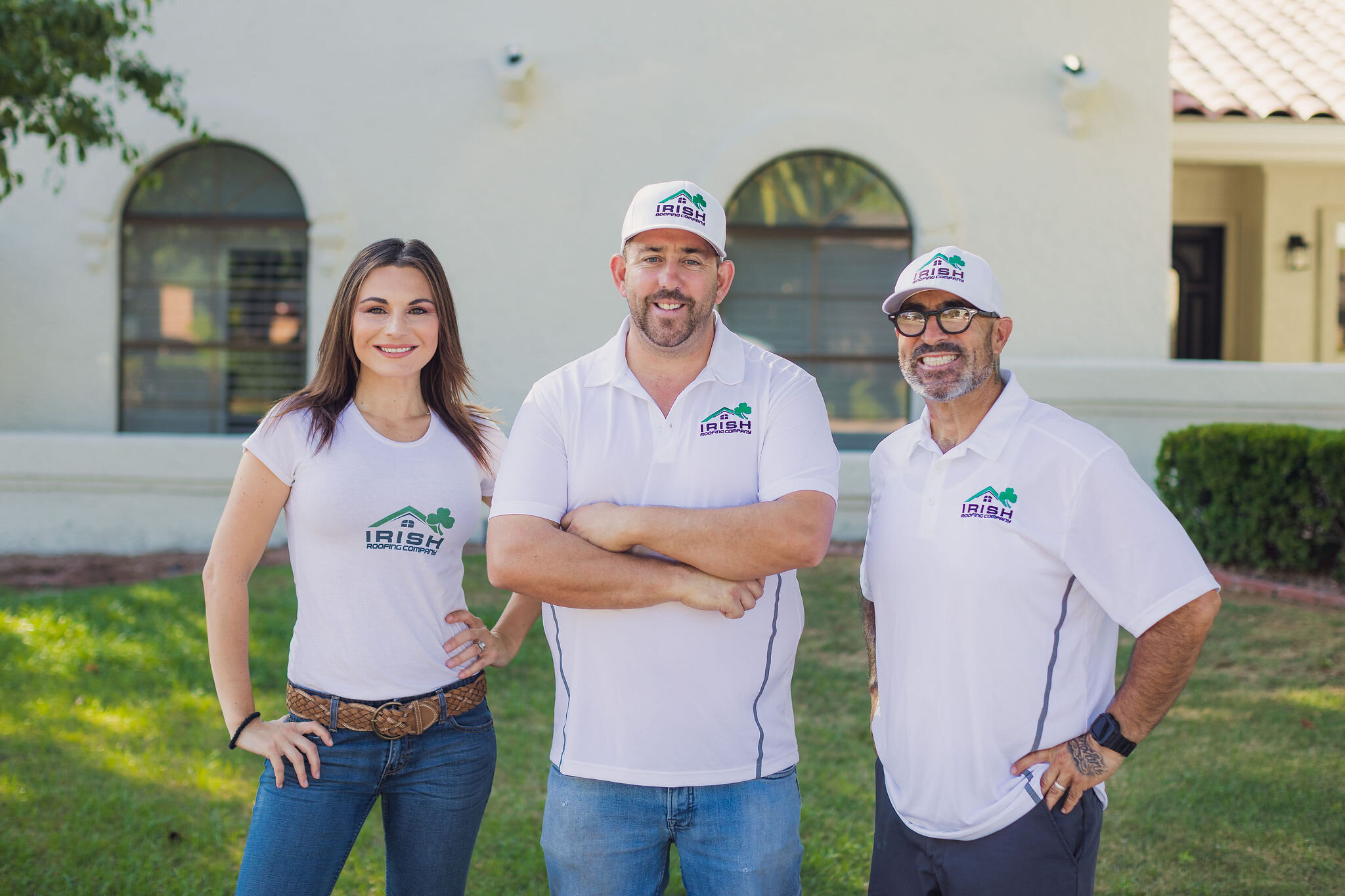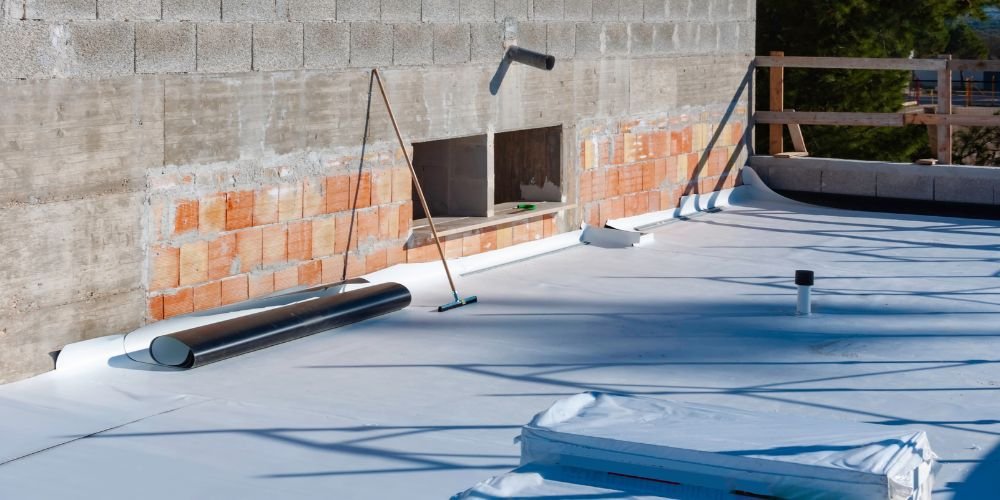
ROLLED ROOFING INSTALLATION, REPAIR and replacement IN SCOTTSDALE
We Serve Scottsdale, Phoenix, Fountain Hills, Glendale, Queen Creek, Tempe, Tucson, and Paradise Valley
Rolled roofing offers an easy and budget-friendly way to re-roof a property’s structure. It is a thin, mineral-surfaced, asphalt-based product that comes in rolls and can replace conventional shingles. Rolled roofing, also known as MSR or rolled composition roofing, is ideal for flat or low-sloped roofs on structures like sheds, garages, shops, barns, gazebos, tree houses, workshops, or outbuildings. Rolled roofing comes in standard 100 square feet roll and is available in most hardware stores, home improvement outlets, or online retailers.
Rolled roofing is an excellent alternative to traditional roofing materials. Irish Roofing Company can efficiently handle all rolled roofing installation and repair projects in Scottsdale and nearby areas. We use the best industry-leading products, give attention to detail, and ensure the highest standard of workmanship from start to finish. Our team of skilled roofers has years of experience installing, repairing, and replacing rolled roofing. At Irish Roofing Company, we have the equipment necessary to deliver exceptional results that exceed client expectations. Our trained and competent team can complete any rolled roofing job quickly.
Benefits of Scottsdale Rolled Roofing
Budget-friendly:
Rolled roofing is highly cost-effective. It is made from commonly available materials, making it the most economical roofing solution today. The cost of rolled roofing is even lower than composite shingles and the cost to install it is often less than half that of asphalt shingle roof installation. The lower material and installation cost of rolled roofing makes it an attractive roofing option for budget-conscious property owners.
Easy to install:
Unlike shingles, which take hours to install, rolled roofing is lightweight and boasts a quicker and easier installation process, requiring minimal tools. There are various ways to install rolled roofs, including nails, adhesives, self-adhesive strips, and heat. It is straightforward to unroll and cut to size on the installation site. The installation cost for rolled roofing is very low per square foot compared to other roofing materials.
Waterproofing:
Another benefit of rolled roofing is that it offers significant protection from water damage when installed correctly. A synthetic or felt underlayment can boost the roof’s waterproofing capabilities and make it resistant to mold and mildew. Rolled roofs are perfect for flat or low-pitched roofs as they have a high probability of water pooling.
Compatible with low roofs:
Shingles are not ideal for flat roofs as water can penetrate under the individual shingles. Rolled roofs are excellent for low roofs and offer protection from external elements and leaks, moss, and mold. It is versatile, adaptable, and can be cut into strips for rakes and eaves. The practicality, affordability, and ease of installation of rolled roofs make them perfect for low roofs.
Types of Rolled Roofing We Install in Scottsdale
TPO Rolled Roofing:
TPO or Thermoplastic Polyolefin rolled roofing is highly durable and cost-efficient. This type of rolled roofing is a combination of ethylene-propylene and polypropylene. The roofer rolls the TPO membrane over the roof and secures it using adhesive or a mechanical tool. TPO rolled roofing is resistant to heat, which prevents heat from building up inside the house and keeps it cooler. It also prevents mold, mildew, and algae growth and resists corrosion.
Bitumen Rolled Roofing:
Bitumen rolled roofing is a relatively recent addition and is a form of asphalt roofing designed and sold in rolls. It is available in cold adhesive and self-adhesive forms based on the manufacturing process and application needs. The seams of bitumen rolled roofing are sealed together. Bitumen rolled roofing is costlier than most of its counterparts. When installed and maintained correctly, the bitumen rolled roofing will not wear out fast and will last around 20 years.
Our Reviews - Rolled Roofing Scottsdale
Our goal is not only to provide our clients the best customer care and service, but to also build strong and professional working relationships.
Scottsdale Rolled Roofing Installation Process
Measurement: Roofing technicians individually measure each roof section with a measuring tape to calculate the roofing material requirement. They ensure all tools like ladders, hammers, trowels, gloves, push brooms, roofing nails, utility knives, and roofing cement are handy to avoid interruptions.
Preparation: Proper surface preparation is a must for rolled roofing installation. In the next step, the roofer removes all old shingles, cleans any loose debris and dirt, performs necessary repairs, and hammers any nails sticking up to prepare an adequate base for roll roofing installation.
Underlayment: The roofing contractor applies an underlayment to the roof surface. Although rolled roofing does not require underlayment, installing one prevents leakage and moisture penetration and improves the roof’s longevity.
Cutting material: The roofers precisely cut the rolls to appropriate lengths using a utility knife. After that, they use a trowel or brush to apply an asphalt adhesive or roofing cement evenly to the roof’s surface where they will install the material.
Apply rolled material: The roofing material is then unrolled over the adhesive across the roof, pressing it firmly to ensure a strong and secure bond. After securing the layer, the roofers secure the edges further by hammering the nails, spaced 6 to 12 inches apart across the roof’s length.
Trim excess: The roofing contractor trims any excess material and gives the roof a final cleaning. The property owners can consider a protective coating application to boost durability and longevity.
Signs Scottsdale Rolled Roofing Repair is Needed
-
Our inspection teams frequently identify interior water stains as early indicators of rolled roofing problems. These signs often appear on ceilings or walls, sometimes far from the actual water entry point. The pattern and color of water stains provide valuable information about the duration and severity of the leak. Our experienced technicians trace these indicators to their source, examining the roofing system for compromised seams, damaged flashing, or other entry points requiring immediate attention.
-
Physical damage to rolled roofing demands prompt professional evaluation to prevent water infiltration. Our specialists look for splits along seams, punctures from debris impact, and stress cracks from thermal cycling. These vulnerabilities often develop around roof penetrations or areas with high foot traffic. We document all visible damage during inspections, noting the size, location, and potential underlying causes to develop effective repair strategies.
-
Surface deformations in rolled roofing materials signal trapped moisture or adhesion failures beneath the membrane. These blisters may expand and contract with temperature changes, potentially leading to material separation or rupture. Our repair specialists evaluate the extent of affected areas to determine whether localized repairs or more extensive remediation might be necessary. Proper diagnosis prevents future membrane failures and protects the underlying structure.
-
The integrity of rolled roofing relies heavily on properly sealed and maintained seams. Our technicians examine seam conditions throughout the roof surface, identifying areas of separation or deterioration. Weather exposure and thermal movement can stress these critical junctions over time. We assess adhesion quality and material condition at all seams to maintain the roof's water-tight barrier and structural stability.
-
Compromised flashing around roof penetrations, walls, and transitions creates vulnerable points for water entry. Our inspection method includes a detailed examination of all flashing components for signs of damage or deterioration. Proper flashing installation and maintenance protect these critical areas from water infiltration. We evaluate the flashing material condition and its integration with the surrounding roofing system.
-
The protective granular coating on rolled roofing materials shields the underlying asphalt from UV damage and weathering. When these granules become loose or wash away, the roofing material becomes more vulnerable to deterioration. Our maintenance teams monitor granule loss patterns to assess overall roof condition. Regular evaluation of surface wear helps determine optimal timing for preventive maintenance or replacement needs.
Common Causes of Scottsdale Rolled Roofing Damage
-
Scottsdale's extreme climate creates unique challenges for rolled roofing systems. The intense summer heat followed by monsoon rains subjects materials to severe thermal stress and moisture exposure. Strong winds during storm seasons can lift and damage roofing edges while carrying abrasive debris. These weather patterns, combined with prolonged UV exposure, accelerate the natural aging process of roofing materials and test the limits of seam integrity.
-
Professional installation requires detailed knowledge of rolled roofing techniques and local climate considerations. Common installation issues include improper overlap measurements, inadequate adhesive application, and incorrect flashing integration. These oversights often lead to premature system failure, particularly in areas exposed to intense heat and seasonal rains. Problems may also arise from improper substrate preparation or insufficient attention to drainage patterns.
-
Regular maintenance plays a vital role in extending the lifespan of rolled roofing. Neglected inspections and delayed repairs allow minor issues to evolve into significant problems. Accumulated debris and organic matter can trap moisture against the roof surface, accelerating deterioration. Minor vulnerabilities may develop into costly structural concerns requiring extensive repairs without periodic professional assessment.
-
Effective water management significantly impacts rolled roofing performance. Inadequate slopes or blocked drainage paths can result in standing water, which adds weight stress and accelerates material breakdown. Improper drainage design may create areas where water pools during heavy rains, leading to premature aging and potential leaks. Professional installation includes careful attention to proper slope creation and maintenance of clear drainage channels.
-
Walking traffic during maintenance work and falling debris can directly damage rolled roofing surfaces. Impact from tree branches or maintenance equipment may create tears or punctures in the roofing material. These breaches compromise the watertight integrity of the system and require prompt professional repair to prevent water infiltration and further deterioration.
-
Proper attic ventilation helps regulate temperature and moisture levels that affect rolled roofing performance. Poor ventilation can trap heat and moisture, accelerating the aging of roofing materials from beneath. The combination of extreme external temperatures and inadequate ventilation stresses adhesives and seams. Professional installation includes evaluating and optimizing ventilation systems for maximum roof longevity.
Choose Irish Roofing Company for Rolled Roofing in Scottsdale
-
Our deep understanding of Scottsdale's unique climate challenges informs every aspect of our rolled roofing services. We maintain extensive knowledge of local building codes and optimal installation techniques for desert conditions. Our experience spans decades of working with various rolled roofing systems throughout the area. This regional expertise translates into durable installations and effective repair strategies tailored to local weather patterns.
-
Our company maintains comprehensive insurance coverage and all required state licenses for roofing operations. We carry extensive liability coverage, protecting client property and our workforce throughout every project. Our licensing credentials demonstrate commitment to professional standards and regulatory compliance. Documentation of insurance and licensing remains readily available for client review and verification.
-
We prioritize clear communication and quality artistry throughout every project phase. Our team provides detailed explanations of work processes and regularly updates project progress. We address questions and concerns promptly while delivering results that exceed expectations. Client feedback drives our continuous improvement in service delivery and technical expertise.
-
Our transparent pricing structure reflects the value of quality materials and professional installation. We provide detailed estimates outlining all aspects of rolled roofing projects, from materials to labor costs. Our competitive rates incorporate comprehensive warranty coverage and long-term performance considerations. We offer flexible payment options while maintaining our commitment to superior craftsmanship and materials.
Irish Roofing Company offers reliable and lasting rolled roofing solutions in Scottsdale. We adopt a comprehensive approach for each project and strive to provide the best possible service with honesty and integrity. We possess the experience, expertise, tools, and equipment to do any rolled roofing job promptly and efficiently.
Frequently Asked Questions - Rolled Roofing in Scottsdale
-
A rolled roofing can last about 10 to 20 years, depending on material quality, installation technique, maintenance, and local climatic conditions. Hiring a qualified, licensed roofing contractor for rolled installation, repairs, and maintenance is recommended.
-
Whether to install rolled roofing over old rolled roofing depends on the existing rolled roofing type, condition, and local codes. However, it is recommended to do so only if the old roofing material is in good condition and may create issues for the newly installed rolled roof. A new layer over an old rolled roof will also add to the roof’s weight and can weaken the layers, leading to structural issues like sagging and water pooling. Therefore, removing the old layer before installing new rolled roofing is best. A roofing contractor can assess the roof’s condition to assess the suitability of laying new rolled roofing over the old one.
-
Most rolled roofing products offer superior fire resistance. Quality rolled roofing has a Class A fire rating to ensure maximum protection. It means that the rolled roofing will perform better if there is a severe fire incident and will prevent the flames from spreading to other areas. Professionals recommend checking the fire rating of the rolled roofing products before installation to ensure their effectiveness.
-
Rolled roofing is a cost-effective, durable roofing option that comes in large rolls. It is typically made from asphalt and is ideal for low-slope or flat roofs.
-
Rolled roofing is ideal for flat or low-slope roofs, making it an excellent choice for many Scottsdale homes. It offers an affordable and efficient roofing solution for these types of roofs.
-
The cost of installing rolled roofing in Scottsdale varies depending on the size of the roof, the materials used, and the labor involved. It costs between $1.50 and $3.00 per square foot.
-
Yes, rolled roofing can be repaired. Our team at Irish Roofing Company can fix small holes, leaks, or other damages to extend the lifespan of your roof.
-
Signs of damage include leaks, visible cracks or tears, or areas where the roofing material has detached. If you notice any of these signs, it’s best to schedule an inspection.
-
Rolled roofing is more affordable than traditional shingles or tile, making it an excellent option for budget-conscious homeowners. However, it’s generally not as long-lasting or aesthetically pleasing as other materials.
-
Rolled roofing is an affordable, quick-installation option with decent durability for low-slope roofs. It also reflects heat, making it more energy-efficient in the Arizona heat.
-
Yes, rolled roofing helps reflect sunlight, reducing cooling costs in the hot Scottsdale climate.
-
Rolled roofing is installed by unrolling the material over the roof deck, overlapping seams, and securing it with nails or adhesive. Proper installation is critical to avoid leaks.
-
Routine maintenance, such as cleaning debris, checking for leaks, and ensuring proper drainage, is essential to keep your rolled roof in good condition.
-
Rolled roofing is best suited for flat or low-slope roofs. Steep roofs are not recommended, as the material may not stay in place.
-
Typically, installing rolled roofing takes between one and two days, depending on the size of the roof and weather conditions.
-
Rolled roofing is designed to withstand Arizona’s hot temperatures. However, prolonged exposure to excessive heat can cause the material to degrade over time, so regular inspections are recommended.


